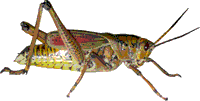Entomology Collections, General

Entomology Papers from Other Sources
Document Type
Article
Date of this Version
1988
Abstract
Sterile backcross (Be) males originate from the hybridization of Heliothis subflexa (Guennee) females to H. virescens (F.) males followed by recurrent backcrossing of the fertile female progeny to H. virescens males. Ultrastructural transmission electron microscope (TEM) studies of the postmeiotic maturation of eupyrene sperm cells in Be males, and comparisons with the cells in normal H. virescens males, show that the early stages in cell differentiation and maturation are similar in Be and normal H. virescens males. In 3- or 5-d-old pupae, some of the Be spermatids contain large vacuoles in the cytoplasm or in the mitochondrial derivatives (MDs). Also, the MDs are greatly enlarged at certain levels in the sperm tail and appear normal in other sections. Other structures in the maturing sperm cell, such as the axial filament, cell membranes, manchette system, satellite bodies, and cristae, maintain normal morphology. In more mature eupyrene sperm bundles, it appears that cell membranes often rupture and some of the cells fuse to form abnormal structures with multiple axial filaments and malformed MDs. In any given section we commonly observe some cells with gross abnormalities of the MDs and neighboring cells in the section that are normal. As maturation of the eupyrene sperm bundle continues, the abnormalities become much more severe. In adult Be males, some cells appear normal in some sections. However, in other sections it is difficult to recognize any normal eupyrene sperm cells, and there is generalized breakdown of many cells in the sperm bundle.


Comments
Published in Ann. Entomol. Soc. Am. 81(2): 301-307 (1988).